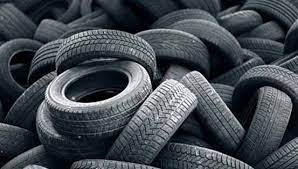
The market was badly damaged by the COVID-19 pandemic, as constraints imposed by the pandemic hindered the manufacture of tires, footwear, and other industrial items, which are the key end-user industries for synthetic rubber. Nonetheless, the market for synthetic rubber reached pre-pandemic levels in 2022 due to the resumption of end-user industries and increased production. In addition, it is anticipated to increase steadily throughout the projection period.
Major Highlights
Increasing demand owing to expanding electric car manufacturing and a spike in demand for sports footwear will likely stimulate the market’s growth over the medium term.
In contrast, the substitution of polyurethanes for synthetic rubber in some applications is projected to restrict the market’s expansion.
Future market opportunities are projected to arise from the development of bio-based feedstock for synthetic rubber and the increasing need for medical gloves.
Due to China, India, and Japan’s substantial demand, Asia-Pacific has the largest market share and will likely continue to dominate the market during the projection period.

Trends in the Synthetic Rubber Market
The tire and tire component market category holds the largest market share in the synthetic rubber industry. Because to its excellent ageing stability and great abrasion resistance, Styrene-butadiene rubber is the preferred material in the tire business.
Almost fifty percent of automobile tires are comprised of styrene-butadiene rubber blended with natural rubber.
To cut production costs, the ratio of SBR to natural rubber in low-end tires is decreased. This is a cost-effective choice despite the fact that it affects tire life.
According to the US Tire Manufacturers Association, passenger and light truck tires contain 24% synthetic rubber by volume, whereas heavy truck tires contain 11% synthetic rubber.
According to the International Tyre and Rubber Association (ITRA), China and the United States make the most tires worldwide.
The Chinese tire industry produced roughly 902.5 million tires in 2021, up from approximately 807.5 million the year before.
According to the Modern Tire Dealer, in 2021 the United States shipped over 330 million tires, of which approximately 222 million were replacement passenger tires.
The demand for tires and tire components is anticipated to increase as a result of a 3% increase in the automotive industry in 2021 compared to 2020 and a rise in electric vehicle production.
Hence, these factors are projected to stimulate the tire and tire component market throughout the forecast period.
Asia-Pacific will rule the market.
Asia-Pacific dominates the synthetic rubber industry due to India, China, and Japan’s increasing demand.
The Asia Pacific area is home to major tire-producing countries in the globe, i.e. (in ranking order) China, India, Japan, South Korea, Thailand, and Indonesia.
According to data from the Chinese Rubber Industry Association Tire Branch, the 38 leading member companies would produce 529.22 million tires in 2021, an increase of 11.28 percent from 2020.
Additionally, the overall output of passenger vehicle tires in China was 378.42 million in 2021, indicating a year-on-year growth of 14.25%, while the production of Truck, Bus, and Radial (TBR) tires was 122.39 million, a year-on-year increase of 4.12%.
After China, India is one of the main rubber producers and consumers in the Asia-Pacific area. Despite being one of the world’s greatest rubber producers, the nation imports a significant amount of rubber to fulfill local demand.
In India, there are around 6,000 manufacturing units, including 30 large-scale manufacturing units, 300 medium-scale manufacturing units, and approximately 5,600 small-scale and micro-scale manufacturing units. All of these factories produce over 35,000 rubber goods in the United States.
Almost 65% of the rubber produced in India is utilized for the production of automobile tires and tubes (50%), bicycle tires and tubes (15%), footwear (12%), belts and hoses (6%) and other items (17%). In 2021, there will be roughly 66 tire-manufacturing factories and 41 tire-manufacturing businesses with a total revenue of approximately USD 8.5 billion and exports of approximately USD 1.28 billion.
These factors are anticipated to contribute to Asia-market Pacific’s dominance during the forecast period.
Study of Market Competitors in Synthetic Rubber
The market for synthetic rubber is fragmented. Market leaders include ExxonMobil Corporation, Kumho Petrochemical, Saudi Arabian Oil Company, TSRC, and China Petrochemical Corporation (in no particular order) (Sinopec).
